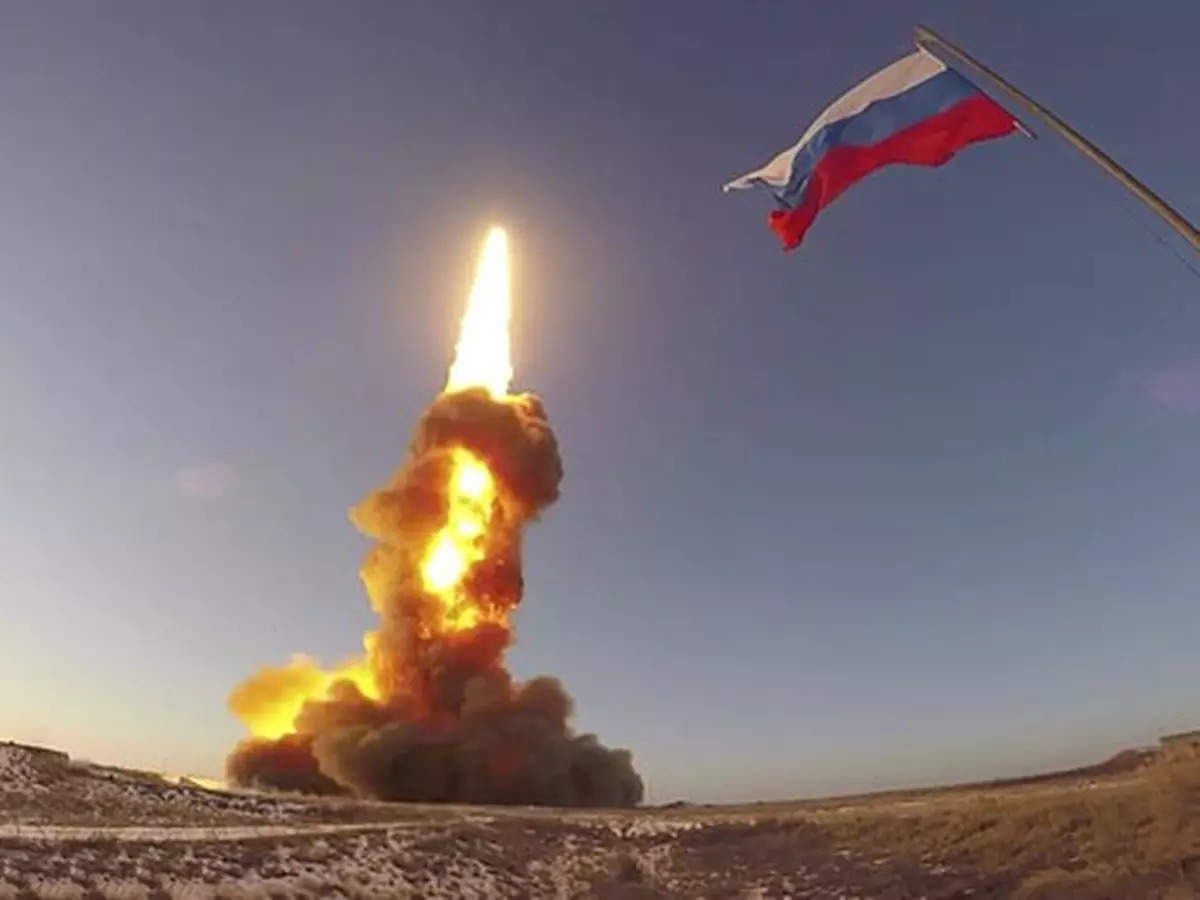Russian President Vladimir Putin told military university graduates he met in the Kremlin on 21 June that Russia’s first RS-28 Sarmat heavy intercontinental ballistic missile (ICBM) will begin combat duty at the end of the year. The announcement came two months after the Ministry of Defence (MoD) of the Russian Federation reported the first test launch of the ICBM with a dummy warhead from the Plesetsk cosmodrome in the Arkhangelsk Oblast on 20 April. The MoD also declared the test successful and said that the dummy warhead landed at the Kura test range on the Kamchatka Peninsula. At least three ejection tests of the missile have been conducted since December 2017, all at Plesetsk, but the 20 April test represents the first full flight test of the missile.
The RS-28 Sarmat (named after the Sarmatians; NATO reporting name: SS-X-29 or SS-X-30), known as “Satan II”, is a Russian liquid-fueled, MIRV-equipped super-heavy intercontinental ballistic missile (ICBM) produced by the Makeyev Rocket Design Bureau since 2009. It is intended to replace the R-36M ICBM (SS-18 ‘Satan’) in Russia’s arsenal. The Sarmat Super Heavy Intercontinental Ballistic Missile is one of the six new Russian strategic weapons unveiled by Russian president Vladimir Putin on 1 March 2018. The RS-28 Sarmat made its first test flight on 20 April 2022, and the Russian government expects the missile to enter service later in the year. The RS-28 Sarmat will be capable of carrying about 10 tonnes of payload, for either up to 10 heavy or 15 light MIRV warheads, an unspecified number of Avangard hypersonic glide vehicles (HGVs) or a combination of warheads and several countermeasures against anti-ballistic missile systems.

The Russian Ministry of Defense said that the missile is Russia’s response to the U.S. Prompt Global Strike system. Sarmat has a short boost phase, which shortens the interval when it can be tracked by satellites with infrared sensors, such as the U.S. Space-Based Infrared System, making it more difficult to intercept. It is speculated that the Sarmat could fly a trajectory over the South Pole, completely immune to any current missile defense system,[35] and that it has the Fractional Orbital Bombardment (FOBS) capability. According to various sources, RS-28’s launch sites are to be equipped with the “Mozyr” active protection system, designed to negate a potential adversary’s first strike advantage by discharging a cloud of metal arrows or balls kinetically destroying incoming bombs, cruise missiles and ICBM warheads at altitudes of up to 6 km.
Equipped with a multiple independently targetable re?entry vehicle (MIRV), Sarmat is intended as a replacement for the legacy Voyevoda ICBM, which is known under its NATO designation as the SS-18 ‘Satan‘ Mod 5, resulting in the RS-28 being colloquially dubbed ‘Satan II’. Russia’s Strategic Missile Forces (Raketnye Voyska Strategicheskogo Naznacheniya: RVSN) intend to retain the existing Voyevoda ICBMs until the Sarmat is officially accepted into service. The last Voyevoda ICBMs were thought to have been produced in 1992. The three-stage Sarmat, also known under the GRAU index 15A28, was developed by State Missile Centre ‘Academician VP Makeyev’ and is estimated to be approximately 35.5 m long and 3 m in diameter. The missile’s maximum range is thought to be 18,000 km with a full mass totalling about 208.1 tonnes.












